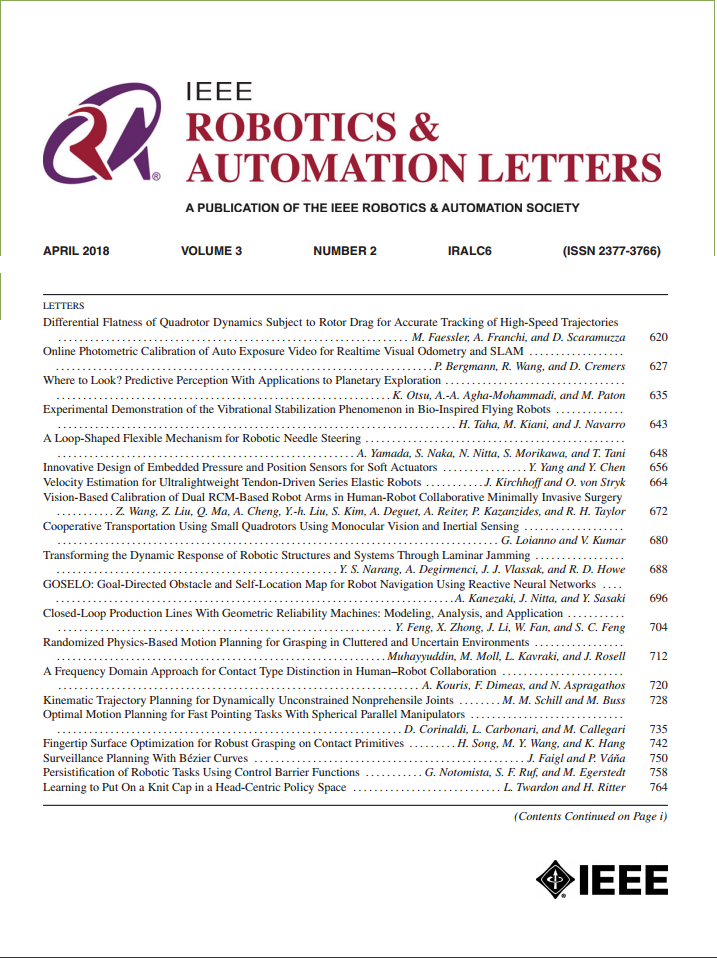Adaptive Neural Control With Online Learning and Short-Term Memory for Adaptive Soft Crawling Robots
IF 4.6
2区 计算机科学
Q2 ROBOTICS
引用次数: 0
Abstract
Soft-bodied crawling animals exhibit efficient and adaptive behaviors resulting from the synergy between morphological computation (e.g., a flexible soft body and anisotropic skin) and neural computation (e.g., neural control with plasticity and short-term memory (STM)). However, applying these principles to soft crawling robots remains challenging. To address this, our study proposes an adaptive neural control system that incorporates online learning and STM to generate adaptive behaviors in soft crawling robots. This control system was implemented in a robot with a flexible soft body, anisotropic abdominal denticles or skin, and embodied laser and flex sensors. The robot demonstrated a multilevel adaptation to various perturbations. Perturbations, such as rough terrain, can be managed through passive (body) adaptation via micro-deformation of the denticles and macro-deformation of the body. Larger perturbations, including being lifted or pressed, crawling through confined spaces, and traversing slopes, are handled by active (neural control) adaptation. The robot can learn new behaviors, such as crawling through confined spaces, and store sensory information to maintain the learned behavior robustly, even in the temporary absence of sensory feedback. In addition, it can estimate its state through sensory feedback prediction, detect abnormal states through prediction errors, and adapt its behavior to address these errors.求助全文
约1分钟内获得全文
求助全文
来源期刊

IEEE Robotics and Automation Letters
Computer Science-Computer Science Applications
CiteScore
9.60
自引率
15.40%
发文量
1428
期刊介绍:
The scope of this journal is to publish peer-reviewed articles that provide a timely and concise account of innovative research ideas and application results, reporting significant theoretical findings and application case studies in areas of robotics and automation.
 求助内容:
求助内容: 应助结果提醒方式:
应助结果提醒方式:


